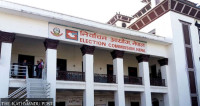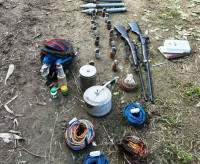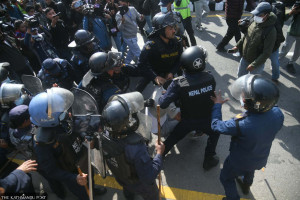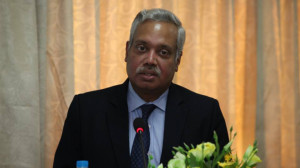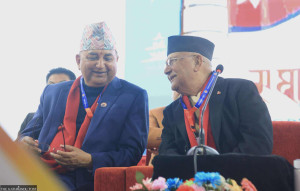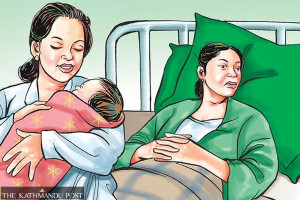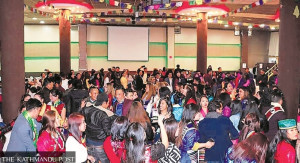National
Nepal-India Boundary Working Group meeting this month after six-year gap
Meeting will revive technical work on Nepal-India border, excluding disputed areas.
Anil Giri
In a major step towards resuming boundary talks, India has proposed dates for the next meeting of the Boundary Working Group (BWG)—the highest-level bilateral mechanism tasked with fieldwork along the Nepal-India border.
This includes the construction, restoration, and repair of boundary pillars, clearing the no-man’s land, and other technical tasks, but excluding the disputed areas of Susta and Kalapani. The meeting is expected to take place later this month.
In the last BWG meeting in Dehradun, India from August 28 to 30 in 2019, both sides agreed to complete the remaining task in the border areas by the end of 2022. However, due to the intervening Covid pandemic, there could be no further meetings.
A follow-up meeting was delayed due to the pandemic and a subsequent boundary dispute between the two countries. The BWG was established in 2014 during Indian Prime Minister Narendra Modi’s visit to Nepal and is jointly constituted by both governments to handle technical work on the border.
Resumption of the BWG meeting has been a key agenda item the Nepali side has been pushing in every high-level visit and meeting since the end of the pandemic.
India has now proposed two possible dates in July for the next meeting, according to a pair of officials at the Ministry of Foreign Affairs and the Department of Survey—one in the second week of July, and the other at the end of the month. However, the Nepali side has yet to get a formal agenda from India. “As soon as we receive the formal agenda, we will send our concurrence for the meeting,” the foreign ministry official informed.
After the pandemic, Nepal repeatedly urged the resumption of BWG meetings, but India was initially reluctant. Tensions escalated after India released a new political map on November 2, 2019, prompting Nepal’s foreign ministry to reaffirm that Kalapani, Lipulek, and Limpiyadhura are integral parts of Nepal.
A statement issued on November 6, 2019, emphasised that such issues must be resolved through mutual consensus and that unilateral actions are unacceptable to Nepal. Several diplomatic correspondences followed, and the issue was raised during high-level visits from Nepal.
The Nepal-India Joint Technical Committee, formed in 1981, made significant progress in scientifically mapping the Nepal-India border. In 2007, the committee produced 182 sheets of boundary maps using GPS, excluding the disputed areas of Susta in Nawalparasi West and Kalapani in Darchula. After its mandate ended in 2007, the BWG was established in 2014 to take over technical responsibilities.
According to officials, both sides are expected to resume fieldwork across the border and complete unfinished tasks from before 2019. Over the past six years, the Armed Police Force of Nepal and India’s Sashastra Seema Bal have carried out temporary maintenance of boundary pillars. However, such work falls under the formal mandate of the BWG.
The BWG had divided its technical mandate as D1, D2, D3 and D4. As per the mandate, the boundary inspection and joint field work fall under the category of D1. Likewise, maintenance and repair of the boundary pillars and erecting new ones fall under D2.
The cross border inventory that is mandated to dig out the properties held by the citizens of the both sides in each other’s territory fall under D3, and observation of boundary, boundary pillars and erecting new ones with the help of global positioning system or GPS fall under the category of D4.
There are documented cases of Nepali nationals cultivating land on the Indian side and Indian nationals occupying and cultivating land within Nepali territory.
Data from Nepal’s Department of Survey shows that 8,554 boundary pillars have been installed along the border. Of these, 1,325 are missing and 1,956 are either partially or fully damaged. Under the BWG, two supporting mechanisms—the Survey Officials’ Committee and Joint Field Survey Teams—provide technical inputs and are mobilised on the ground.
Before the pandemic, both sides had formed joint teams to carry out tasks such as constructing and repairing boundary pillars, preparing inventories of encroachments, and conducting GPS-based observations.
Currently, some of these responsibilities are being handled by the Armed Police Force of Nepal and India’s Sashastra Seema Bal, which, according to a foreign ministry official, are not the right agencies for these technical duties.
“In order to resume the BWG meeting, we had sent several diplomatic notes to India, but there was no response,” the official told the Post on condition of anonymity. He suggested India’s reluctance may have stemmed from the map dispute that began in November 2019.
In addition to diplomatic notes, successive foreign ministers, including the incumbent Arzu Rana Deuba, urged India to resume the BWG meetings at the earliest. The most recent Nepal-India Joint Commission meeting at foreign minister’s level, held in Kathmandu in January 2024, had also decided to reconvene the BWG.
The BWG is co-led by the Director General of Nepal’s Department of Survey and the Surveyor General of India. So far, six BWG meetings have been held. In 2017, both sides finalised a comprehensive plan and timeline to complete boundary work within five years.




 19.12°C Kathmandu
19.12°C Kathmandu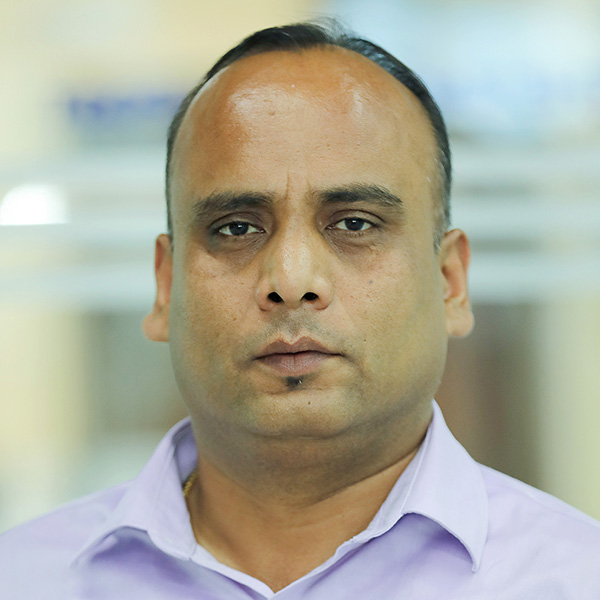

%20(1).jpg&w=200&height=120)

